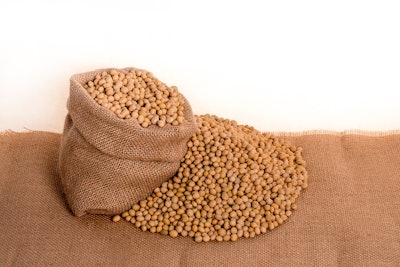
According to a report at MarketWatch, global soybean imports are expected to reach 151 million metric tons this year, of which China will import 97 million, or 64%, according to Peter Meyer, senior director of agricultural analytics at S&P Global Platts. The two largest exporters of soybeans, Brazil and the U.S., are expected to satisfy almost 85% of total global import demand.
“U.S. farmers and trade groups are keenly focused on soybeans and China, as the Chinese are the largest single importer of soy in the world to satisfy feed demand for their massive pork production,” says Meyer.
So far this year, soybeans, corn, and wheat prices have climbed. Futures prices for soybeans SK8, +0.32% and corn CN8, -0.46% have each climbed by roughly 9% for the year to date, as of Friday. Wheat WK8, +0.39% was up almost 10%. Among exchange-traded funds, the Teucrium Soybean fund SOYB, +0.48% has gained more than 6%.
But “if the assumption is that [China goes] after agriculture in retaliation, then one would expect [U.S.] prices to fall,” says William Martin, analyst at Bondurant Futures. That could cut demand for agricultural goods coming from the U.S. and raise the amount of domestic stocks seen at the end of the year. He believes that fundamentals for soybeans are already negative and any added tariffs would add to the price pressures. He’s bearish on soybeans, with the global market facing large year-end stocks, and says the commodity could potentially see prices “a couple of dollars cheaper” at some point in the year.
But prices for soybeans, wheat, and corn may still be destined to rise long term. “If China, Mexico, or others looked elsewhere for their grain purchases, there would likely be a temporary dip in U.S. prices of grains,” says Sal Gilbertie, president and chief investment officer at Teucrium Trading.
Global grain prices, including those in the U.S., would then “very rapidly adjust to equilibrium, because there is too much global demand for grains, with too little excess supply for any price decline due to trade policy to be sustained,” he says. Global ending stocks for the 2017-18 growing season are predicted to be only about an 80-day supply for oilseeds, mainly soybeans; 132-day supply for wheat; and 62-day supply for coarse grains, mainly corn, says Gilbertie.
“Global demand for grains is increasing, which means the price dip would likely end up being a buying opportunity, unless demand mysteriously collapsed somehow,” he says.


















